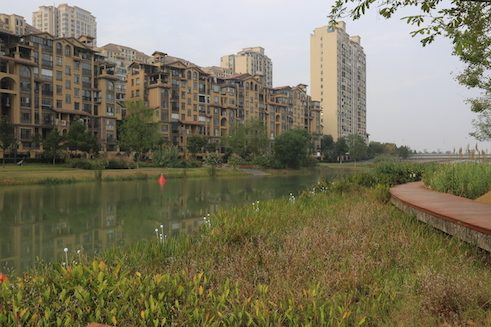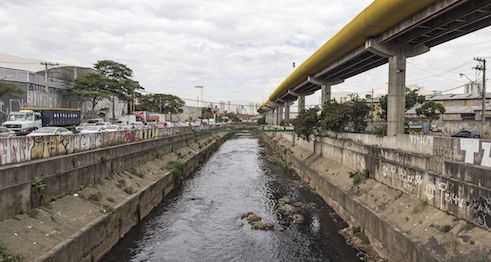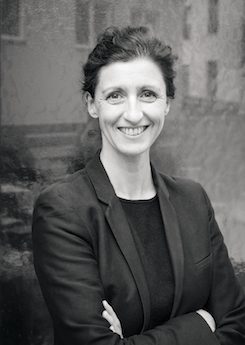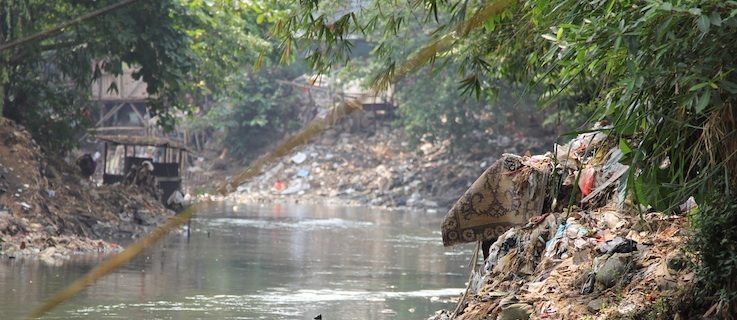Landscape architect and urban planner Regine Keller seeks solutions that meet contemporary demands in both the city and rural space. Her focus is people’s quality of life.
The exhibition Out There in Munich’s Architecture Museum has as its theme the challenges facing landscape architecture in view of a global surge of urbanisation, characterised by environmental pressures, social inequality, spatial injustice and political instability. In addition to Regine Keller, scientists from five universities are showing their research results in this exhibition.
Ms Keller, we think of landscape as recreational space for human beings, and thus we have a situation of nature versus urbanism in urban centres. What options are available for creating sufficient compensation- and recreational surfaces in increasingly densely populated cities?
Now that the majority of people live in cities and no longer in the countryside, access to open landscapes has become more difficult. In past decades, attempts were made to create access to open landscapes through mobility options. That of course generates other problems, such as fragmentation the landscape through transportation infrastructure and high carbon dioxide production. For this reason the idea arose – taking classical modernity as its model – of creating more recreational surfaces in increasingly dense cities. Through increasingly acute densification, pressure grows on existing open spaces. We must qualify them, which means providing them with offers that make spending time outdoors more attractive, and also coming up with new spaces, such as roof gardens.
 Changde/China: urban landscape shaped by water along the Chuanzi River
| Photo: © Lothar Fuchs
On the one hand there are purely urban recreational spaces, such as parks and gardens, but also dual utilisations in which functions that are infra-structurally necessary for a city are linked with designed open spaces. In this connection, how has the scope of landscape architecture’s tasks changed?
Changde/China: urban landscape shaped by water along the Chuanzi River
| Photo: © Lothar Fuchs
On the one hand there are purely urban recreational spaces, such as parks and gardens, but also dual utilisations in which functions that are infra-structurally necessary for a city are linked with designed open spaces. In this connection, how has the scope of landscape architecture’s tasks changed?
This is a trend that started in the 2000’s. The densification of our cities demands new solutions, and dual utilisations of this kind offer great advantages in this respect. But the idea is much older. Central Park in New York City has a huge reservoir lake around which the park was laid down. So this recommendation to couple green infrastructure with recreational use already existed very early on, but it is now really gathering speed in the course of development of megacities. Moreover, with our engineering insights and knowledge, we are in a better position to qualify places that previously were absolute No-Go areas, such as tip sites, which were naturally excluded from use for decades. Today we are getting a handle on these sites in toxicological and engineering terms and can therefore create new outdoor spaces where people can linger.
Are landscape architects collaborating with other disciplines in this context?
Yes indeed, our work is truly multi-disciplinary. Civil engineers and toxicologists, hydrologists and geologists have to work together very closely to be able to implement a landscape structure of this kind successfully.
 São Paulo/Brazil: the Tamanduateí has been completely channeled and partially streamed through pipes since 1957
| Photo: © Marcus Hanke, Institut für Landschaftsarchitektur, Leibniz Universität Hannover
Solar parks, wind parks, technical protective structures such as dikes and dams and of course transportation structures, roads and railway tracks come under the purview of the engineering as a discipline. What kinds of influence can landscape architects have here?
São Paulo/Brazil: the Tamanduateí has been completely channeled and partially streamed through pipes since 1957
| Photo: © Marcus Hanke, Institut für Landschaftsarchitektur, Leibniz Universität Hannover
Solar parks, wind parks, technical protective structures such as dikes and dams and of course transportation structures, roads and railway tracks come under the purview of the engineering as a discipline. What kinds of influence can landscape architects have here?
We are above all involved wit the aesthetic effects of these new energy landscapes, because we of course notice that although these infrastructures are most welcome in the turn to renewable energies, but that their aesthetic implementation is difficult. The landscape blighting caused by wind parks is a continual source of discussion. How do we manage to have these structures not be perceived negatively? That is the art by means of which landscape architects determine a landscape’s value through landscape image analyses and qualitative studies, and inquire where such structures might best be placed. By now, society is in agreement that we need them – just somewhere else and NIMBY – Not In My Back Yard!
Regine Keller answers the question: what means landscape?
The exhibition “Out There” reflects on landscape architecture in global terms, with the focus on exploited and parched landscapes. Are these the themes landscape architects must deal with today?
The exhibition presents research projects by five universities that show how not to handle situations in international megacities. They bring home to us what happens when we disregard the landscape system. The Ciliwung River in Jakarta, for instance, which serves as the this city’s waste removal, or the hills of Medellin in Colombia that are always having landslides that bury people under them. These informal settlements represent a serious problem, because they arise on sites where one actually shouldn’t settle, as the slope tends towards landslides or the plain is always flooding … That, of course, is where the poorest of the poor congregate. Their DIY infrastructures show us what abilities human beings develop to cope with such crisis situations. But they also show us what happens when the resource cycle between city and environs is interrupted. We examine very precisely the resulting ecological collapse that we present in these case studies, and seek to develop solutions. We believe this is one of our profession’s noblest tasks: saving our planet from total breakdown.
 Photo: Ulrike Myrzik
Regine Keller is chair of the Department of landscape Architecture and Public Space at the Technical University (TU) of Munich since 2005, and co-owner of the architectural firm Keller Damm Kollegen GmbH Landschaftsarchitekten Stadtplaner. After completing her studies in art history and theatre at the Ludwig Maximilians University Munich, Keller worked at theatres in Salzburg and Munich. She then took a training programme in garden and landscaping, and following this studied landscape management at the TU Munich. Regine Keller is a member of the Bavarian Chamber of Architects, the Union of German Landscape Architects, the Werkbund, the DASL, the Bavarian Academy of Fine Arts, the Art Academy Berlin, and a part of the committee of members of the Goethe-Institut.
Photo: Ulrike Myrzik
Regine Keller is chair of the Department of landscape Architecture and Public Space at the Technical University (TU) of Munich since 2005, and co-owner of the architectural firm Keller Damm Kollegen GmbH Landschaftsarchitekten Stadtplaner. After completing her studies in art history and theatre at the Ludwig Maximilians University Munich, Keller worked at theatres in Salzburg and Munich. She then took a training programme in garden and landscaping, and following this studied landscape management at the TU Munich. Regine Keller is a member of the Bavarian Chamber of Architects, the Union of German Landscape Architects, the Werkbund, the DASL, the Bavarian Academy of Fine Arts, the Art Academy Berlin, and a part of the committee of members of the Goethe-Institut.
The exhibition draußen Landschaftsarchitektur auf globalem Terrain in the Architekturmuseum der TU Munich is open until 20th of August. The catalogue was edited by Andres Lepik in collaboration with Undine Giseke, Regine Keller, Jörg Rekittke, Antje Stokman and Christian Werthmann at Hatje Cantz.



